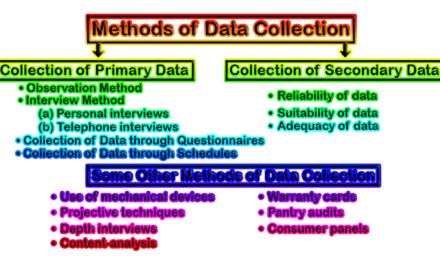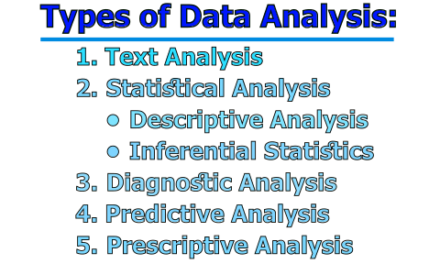How to Write Statement of the Problem in Research:
The statement of the problem is an essential component of a research paper or proposal. It defines the central issue that the researcher intends to investigate, and it helps to establish the scope and direction of the study. Writing a clear and concise statement of the problem is critical for a successful research project. In this article, we will discuss how to write statement of the problem in research.
1. Identify the Research Problem: The first step in writing a statement of the problem is to identify the research problem. This is the issue or topic that you want to investigate in your research project. The research problem should be specific, clear, and relevant to your field of study. It should be something that you are passionate about and interested in exploring further.
For example, if you are conducting research in the field of psychology, your research problem may be related to understanding the impact of childhood trauma on adult mental health. If you are conducting research in the field of education, your research problem may be related to identifying effective teaching strategies for students with learning disabilities.
2. Define the Purpose of the Research: The next step in writing a statement of the problem is to define the purpose of the research. This should include a clear statement of the research question or questions that you are trying to answer in your study. The purpose of the research should be specific and measurable, and it should reflect the overall goal of the study.
For example, if your research problem is related to childhood trauma and adult mental health, your research question may be, “What is the relationship between childhood trauma and adult mental health outcomes?” This question defines the purpose of the research and provides a clear direction for the study.
3. Establish the Significance of the Research: Once you have identified the research problem and defined the purpose of the research, you need to establish the significance of the research. This involves explaining why your research is important and how it will contribute to your field of study. You should provide evidence to support your claim that your research is significant and necessary.
For example, you may explain that childhood trauma is a pervasive issue that affects millions of individuals worldwide, and that understanding its impact on adult mental health is critical for developing effective prevention and treatment strategies. You may also cite existing research that has identified a gap in the literature and explain how your study will fill this gap.
4. Identify the Scope of the Research: The scope of the research refers to the boundaries of the study. This includes the population or sample that you will be studying, the timeframe of the study, and the specific variables or factors that you will be examining. It is important to clearly define the scope of the research to ensure that it is feasible and manageable.
For example, if you are conducting research on the impact of childhood trauma on adult mental health, you may limit your sample to individuals who have experienced trauma before the age of 18. You may also specify the timeframe of the study, such as focusing on mental health outcomes in individuals aged 25-50. Additionally, you may identify specific variables that you will be examining, such as the type and severity of childhood trauma, or the presence of comorbid conditions.
5. State the Hypothesis: You should state the hypothesis or hypotheses that you will be testing in your study. A hypothesis is a tentative explanation for a phenomenon, and it should be testable and falsifiable. Your hypothesis should be consistent with the existing literature, and it should be based on a logical and theoretical framework.
For example, your hypothesis may be that individuals who have experienced severe childhood trauma will have higher rates of depression and anxiety in adulthood compared to those who have experienced less severe trauma or no trauma at all. This hypothesis is consistent with previous research on the impact of childhood trauma on mental health and provides a clear direction for the study. Once you have stated your hypothesis, you should provide a brief explanation of how you will test it in your study. This may involve outlining your research design, the methods you will use to collect and analyze data, and any limitations or potential sources of bias that may impact your results.
6. Discuss the Literature: It is important to provide a brief overview of the existing literature related to the research problem. This can help to contextualize the study and identify gaps in the literature that the study aims to address. You should review relevant research articles, books, and other sources to identify key themes, debates, and controversies related to the research problem.
7. Consider the Practical Implications: Another important consideration when writing a statement of the problem is to consider the practical implications of the research. You should think about how the results of the study might be applied in real-world settings, and how they could be used to inform policy, practice, or future research. This can help to demonstrate the value of the research and its relevance to broader societal issues.
8. Define Key Terms: When writing a statement of the problem, it is important to define any key terms or concepts that may be unfamiliar to the reader. This can help to ensure that the reader understands the scope and purpose of the study, and it can help to avoid confusion or ambiguity.
9. Consider the Research Ethics: Finally, it is important to consider the ethical implications of the research when writing a statement of the problem. You should discuss any potential risks or harms associated with the study, as well as any measures that will be taken to protect the privacy, confidentiality, and well-being of study participants. This can help to ensure that the study is conducted in an ethical and responsible manner.
Overall, writing a statement of the problem requires careful attention to detail, a deep understanding of the research topic, and a clear and concise writing style. By following these guidelines and considering the key elements and factors discussed above, you can ensure that your statement of the problem is effective, informative, and persuasive.
References:
- Creswell, J. W. (2014). Research design: qualitative, quantitative, and mixed methods approaches. Sage publications.
- Leedy, P. D., & Ormrod, J. E. (2010). Practical research: Planning and design. Pearson.
- Polit, D. F., & Beck, C. T. (2017). Nursing research: Generating and assessing evidence for nursing practice. Lippincott Williams & Wilkins.
- Rudestam, K. E., & Newton, R. R. (2015). Surviving your dissertation: A comprehensive guide to content and process. Sage publications.
- Sekaran, U., & Bougie, R. (2016). Research methods for business: A skill building approach. John Wiley & Sons.
- Silverman, D. (2016). Qualitative research. Sage publications.
- Trochim, W. M. K., & Donnelly, J. P. (2008). The research methods knowledge base. Cengage Learning.
- Walliman, N. (2017). Research methods: The basics. Routledge.
- Yin, R. K. (2017). Case study research and applications: Design and methods. Sage publications.
- Zikmund, W. G., Babin, B. J., Carr, J. C., & Griffin, M. (2013). Business research methods. Cengage Learning.

Former Student at Rajshahi University










